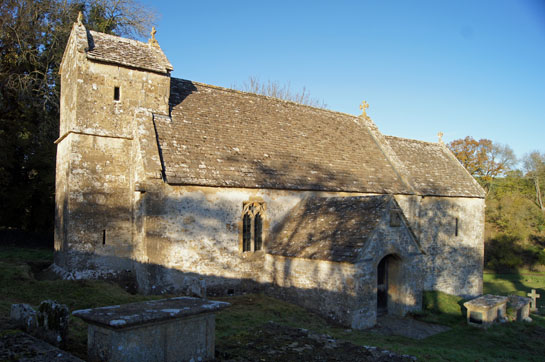|
Alphabetical List |
|
|
|
|
|
|
|
County List and Topics |
|
|
|
Please sign my Guestbook and leave feedback |
|
|
||||||||||||||||
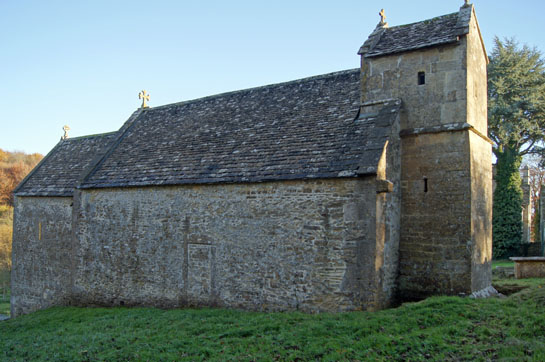 |
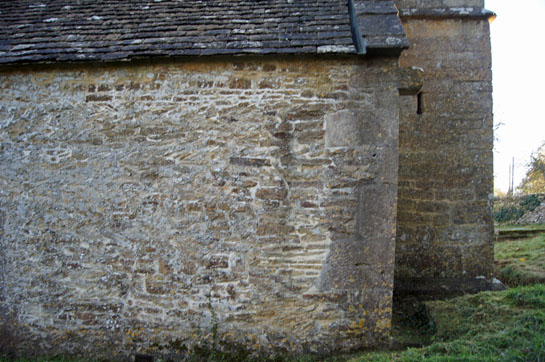 |
|
Left: The north side that does not have a single window! Note the lintelled door that may well be Anglo-Saxon. Right: At the north west end we see some of the herringbone work that conclusively shows that the nave is of Anglo-Saxon origin. Note also the huge quoin stones. |
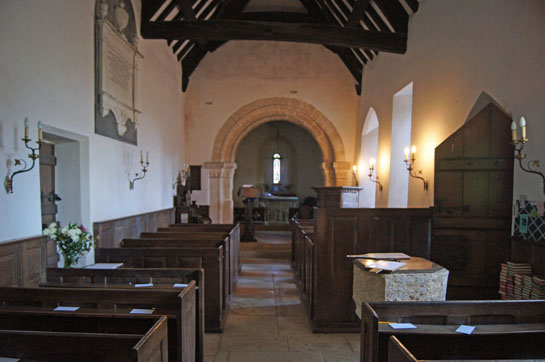 |
 |
||
|
Left: The view towards the west end. Note that the blocked doorway on the north side rather charmingly still has a wooden door set within it! The font is next to the door. Right: A closer view of the plain chancel arch. Note the size of the splays on one of the two south chancel windows, housing only very narrow lancet windows. |
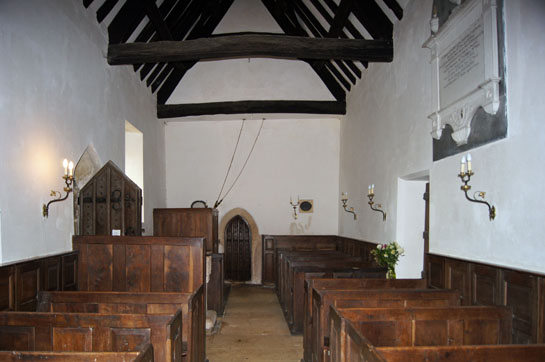 |
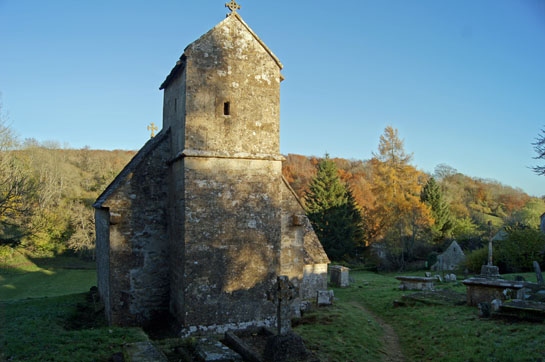 |
||||||||||||||||
|
Above: Looking towards the west. Right: The church presents a curiously asymmetrical cross section from the west. One might say it’s a rather higgledy-piggledy church. Note the beautiful late autumn scenery in the background. |
|||||||||||||||||
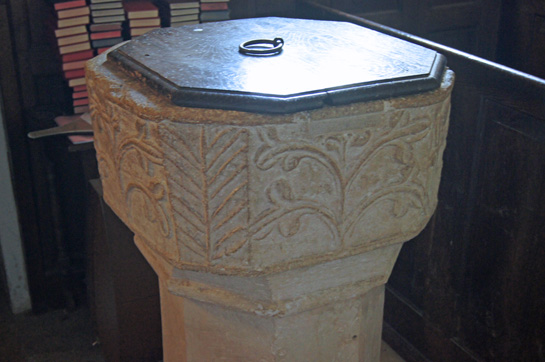 |
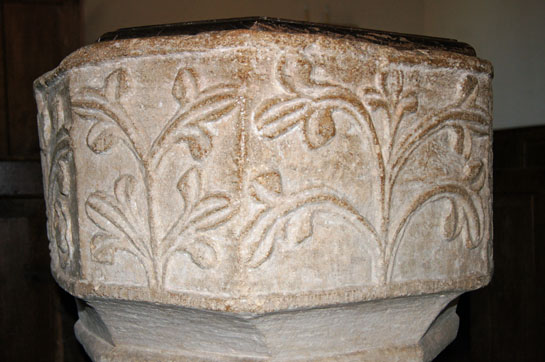 |
||||||||||||||||
|
Two views of the c13 font. |
|||||||||||||||||
 |
|||||||||||||||||
 |
|||||||||||||||||
|
Duntisbourne surprisingly has a series of four misericords on the south side of its chancel. All of them are lion-like faces such as these two. Everyone seems agreed that they must have come from a monastery dissolved during the Reformation. |
|||||||||||||||||
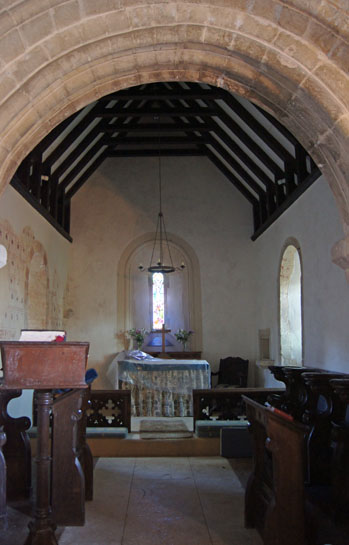 |
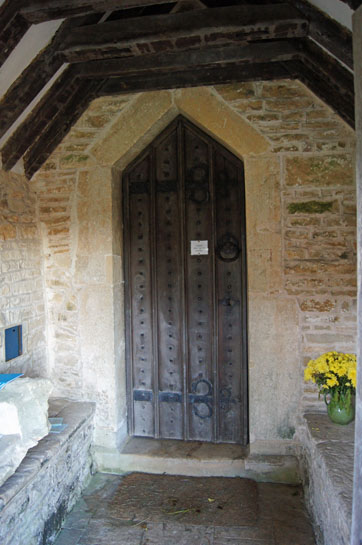 |
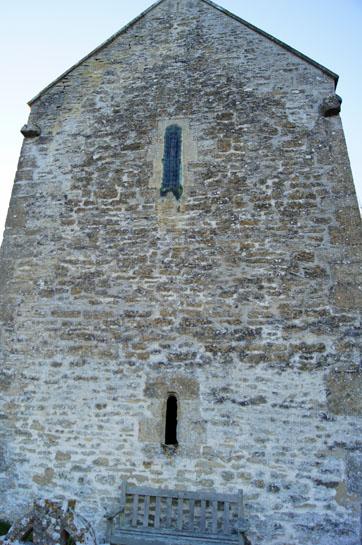 |
|||||||||||||||
|
Left: The chancel. There are stylised c13 wall paintings to the left. The east window dates, surprisingly, only from the c19 according to the church information board. Centre: One needs, perhaps, to guard against automatically attributing triangular-headed windows and doorways to the Anglo-Saxon period - sometimes those that built Norman churches were Saxons! - but given the Anglo-Saxon masonry in the nave we can safely assume that the south door here is as Saxon as it looks! Note the clean lines of the surrounding masonry blocks. Right: The east end. The lower window belongs to the crypt. Notice the massive surrounding masonry blocks. The distance to the chancel window above it gives a dramatic indication of the steepness of the west>east slope upon which this church is built. In saying that the east window is c19 the church information boards must mean the glazing itself. The window space itself surely dates from the time of the nave? Note the corbels to each side. What did these support originally? |
|||||||||||||||||
 |
 |
||||||||||||||||
|
It’s a rare thing to find a crypt that is entered from the outside of a church. Perhaps it is also a minor miracle that it is still accessible to the visitor. This tiny barrel-roofed structure is directly beneath the chancel and also dates from the Norman period. We don’t know what it was for originally, although the floor has the tombs of two rectors. As can be seen from the right hand picture, the original stairs from the chancel above are blocked up. I wonder why they then built a doorway from the south side? There must have been some residual use for it to justify the bother. A mediaeval relic perhaps? |
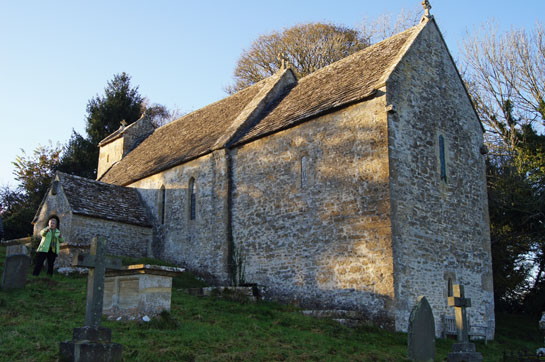 |
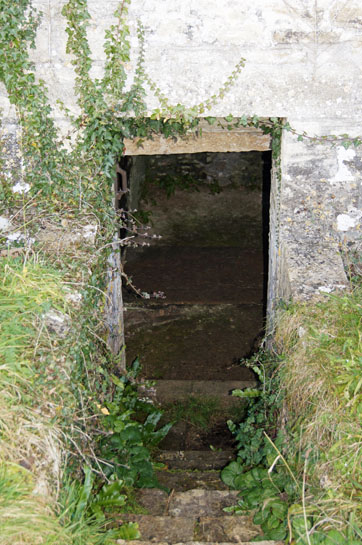 |
|||||||||||
|
Left: The church from the south west showing, again the steepness of the site. The doorway to the crypt is at the junction of nave and chancel and is not visible in this view. Note the original Norman south chancel window. Right: The doorway to the crypt. Spooky! |
||||||||||||
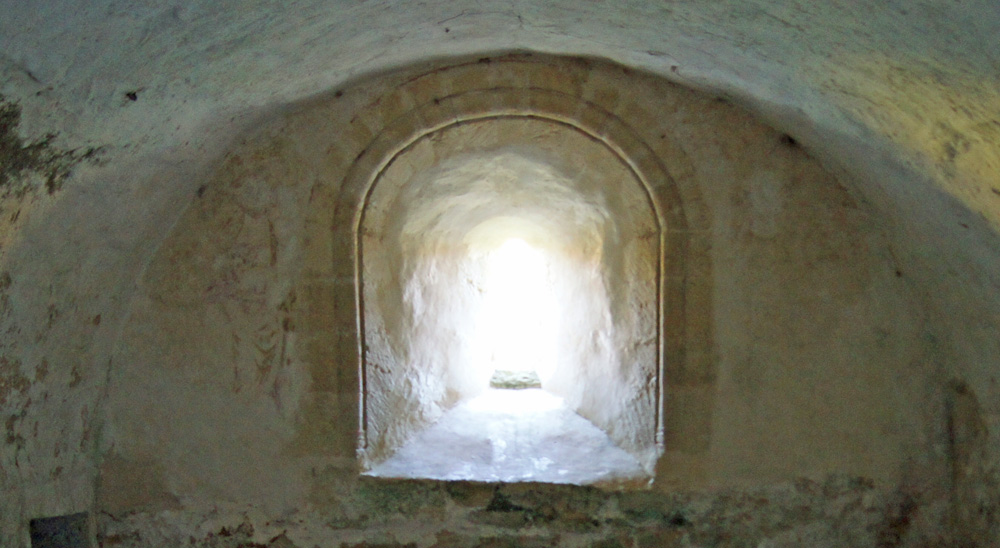 |
||||||||||||
|
The east wall of the crypt shows - very faintly - traces of mediaeval painting especially to the left of the window where the outline of (presumably) a saint can be discerned. One of the hardest things for the church crawler, no matter how experienced, is to remember that all of our churches would have been covered in painted scenes and patterns from top to bottom, end to end and then imagine what it would have looked like. |
||||||||||||
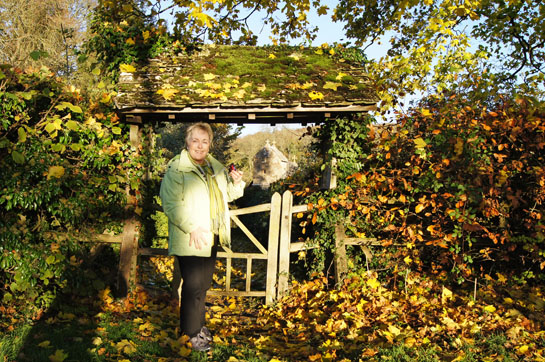 |
||||||||||||
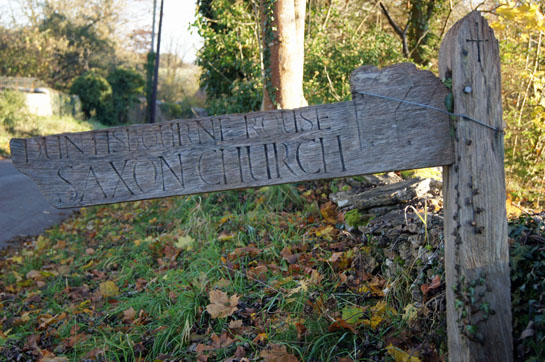 |
||||||||||||
|
Left: Duntisbourne Rouse is a bit of a nightmare to find. There are three Duntisbournes and our sat-nav, at least, didn’t seem to know where Rouse began and ended. It wasn’t just us: we were amused to see another visitor arrive just behind us whom we had last seen waiting to pass a ford in his car at Duntisbourne Abbots just as we were splashing through it in the other direction having turned around! The picture shows Diana blending in beautifully with the autumn greenery of the church gateway with the church just visible in the background. The church is on the road upon which you expect to find it, but you can’t see it from the road. Right: The key to finding the church is this signpost on the left hand side of the road as you drive in the direction of Abbots. If you reach Abbots you’ve come too far! And if you think that sign is impossible to miss well, believe me, you are very much mistaken. Still if you have read this article first you will at least be looking for it! |
||||||||||||
